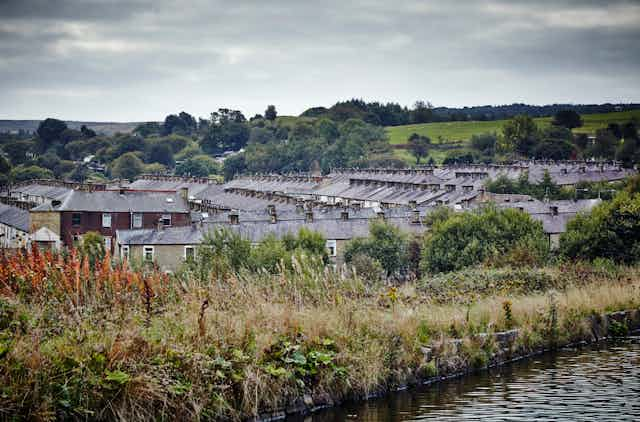The Labour Party is preparing for its second conference since Keir Starmer became leader, and it’s fair to say things haven’t improved much since Labour lost the 2019 general election.
There was the significant by-election loss in Hartlepool, the collapse of Labour’s vote when Lib Dems beat the Tories in Chesham and Amersham, and a close-run thing in the Batley and Spen by-election – where some of the significant number of Muslim constituents diverted their votes from Labour.
Starmer, meanwhile, may well have clear ideas about how to rebuild and win support in such diverse constituencies, but is more often in the news for his administrative actions within the party: switching advisers, cutting staff and expelling supporters.
While Labour has had its host of challenges to contend with over the past few years, to understand the real issues facing the party, it’s important to look back – as it is long-term processes that have shaped the current state of Labour.
In my new book, I track what’s been happening in the northern English town of Burnley in Lancashire and how this has played out politically. I worked for the council there for over 20 years from the mid-1990s. The Lancashire town shows how deindustrialisation has led to deepening poverty, demoralisation and resentment.
I’ve seen first hand how, over the years, these feelings and concerns resulting from people’s sense of abandonment, have been channelled towards right-wing populism – which has also been the case in many other traditional Labour voting towns.
Turning blue
Burnley elected its first Conservative MP for more than a century in the 2019 election. But the crisis in the relationship between Labour and voters it relied on for support was evident from the mid-1990s.
Through the post-war decades, the Labour party had been dominant locally. But this proved no defence against the shock of deindustrialisation and the accompanying deep cuts to public sector budgets. Margaret Thatcher’s government had reshaped the economy around services rather than manufacturing. This hit northern towns like Burnley hard. The town’s last coal mine closed in 1982, most of the remaining cotton mills shut during the early 1980s, and many other factories closed.
As I explain in my book, in the decade from 1981, the number of manufacturing jobs in Burnley fell from 17,786 – 45% of the town’s workforce – to 12,870. The 1990s saw further redundancies, and by 2003, manufacturing made up just 26% of the town’s jobs.

The political consequences of these changes did not happen immediately. Instead, they were shaped by political actors who used people’s understandable anxiety and justified anger to create social divisions. Discontent was directed towards “out-groups” and turned on “others” – such as immigrants and people of colour – rather than on “the system”.
Between 1996 and 2003, Labour’s share of the votes in Burnley’s local elections fell from 61% to 30%, staying around this level for the rest of the decade. And in 2002, Burnley became the first place to see a clutch of British National Party (BNP) councillors elected - and their representation grew the following year.
Though their momentum soon stalled and declined, the far-right BNP popularised antipathy to immigration and Europe and racist opposition to multiculturalism. The same themes shaped local politics in many other places – and then UKIP succeeded in generalising concern on these issues.

Beyond Brexit
And so with the build-up of UKIP’s support, and British membership of the European Union an increasingly controversial issue, a small group of ambitious Conservative politicians saw they could draw votes from people for who whom “Europe” had become a coded way of expressing frustration with current social arrangements. And the rest, as they say, is history.
This right-wing populism enabled Boris Johnson and his colleagues to build support for Brexit – and themselves – by mobilising the fear of outsiders and promoting illusory conceptions of national identity.

And it has become the formula the Conservatives have used to benefit from the deindustrialisation, disorientation and demoralisation in northern communities. Problems that many argue were largely caused by previous Conservative governments.
The challenge now then for Labour is to come up with a strategy and programme that will both engage those who’ve voted Tory in the past – and that wins “new support” for progressive change. And if my experience in Burnley is anything to go by, relating to people’s emotions, frustrations and concerns is where the real work is to be done.

